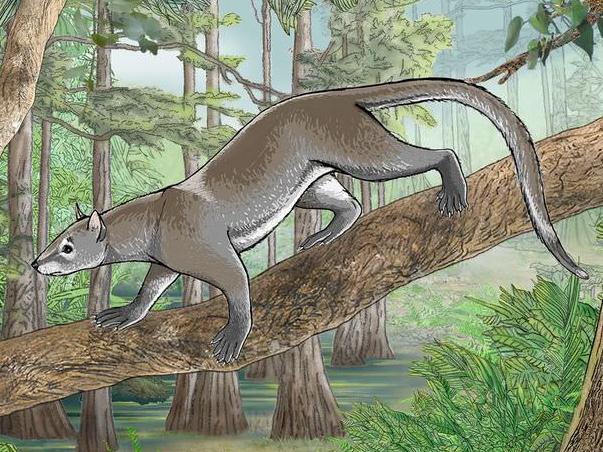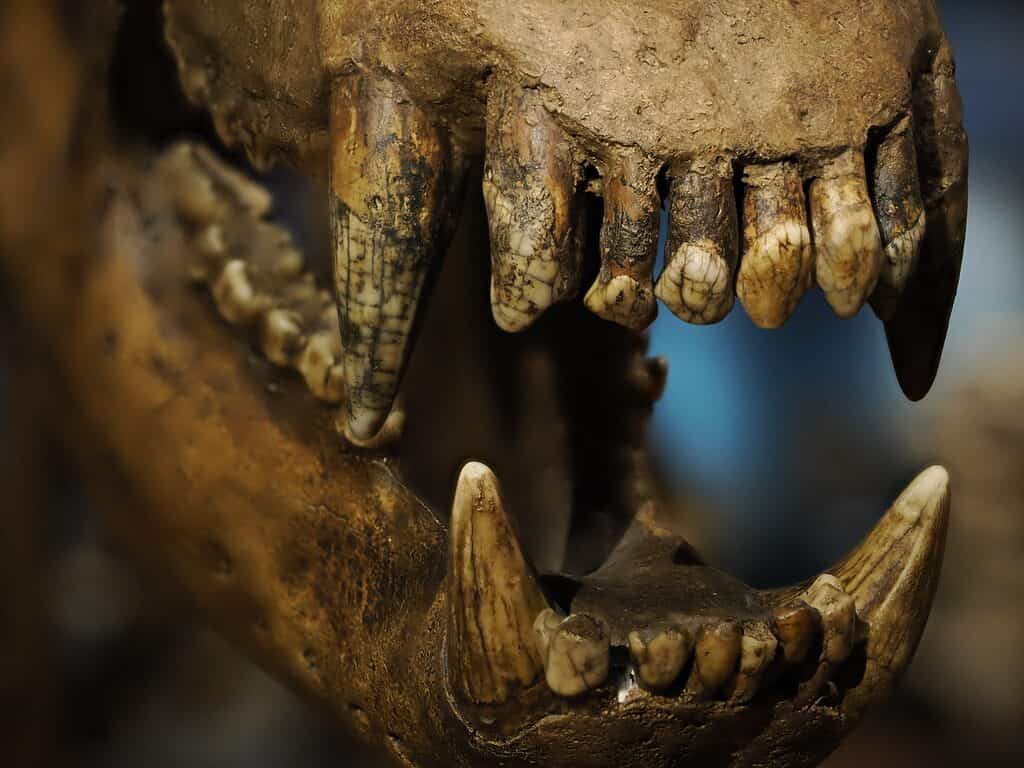Bears are mostly large, strong mammals that live in many places throughout the world. Have you ever wondered where they come from originally or what their oldest ancestors are? Today, we’re going to examine the oldest bear fossil ever found. We’ll track the evolution of bears from far in the past into the present and show you the oldest true bears that ever lived.
How Old Were the Ancestors of Modern Bears?
The first ancestors of modern bears appeared about at some point during the Eocene, between 55.8 and 33.9 million years ago. This epoch is when the earliest fossil evidence of modern mammals belonging to the clade Carnivoraformes appeared. These mammals were small and light, most of them weighing less than 50 pounds. The most interesting thing about them is that they were carnivores.
Two options have emerged as the earliest relatives of bears. They are Dormaalocyon latouri and Parictis. One of the earliest bear ancestors was Dormaalocyon latouri since it was also one of the earliest carnivores ever found. This creature appeared about 56 to 55 million years ago in Europe. This species was only discovered in 2014, and scientists estimate that it weighed about 2 pounds.
Dormaalocyon latouri
This bear is so ancient that it is probably related to a host of modern carnivores rather than just being a bear ancestor.

Dormaalocyon latouri is so ancient that it is probably related to a host of modern carnivores rather than just being a bear ancestor.
©603 × 452 pixels, file size: 80 KB, MIME type: image/jpeg – License
So, if we turn our focus away from the earliest carnivores and focus on something a little closer to bears. Parictis was an arctoid that looked something like a raccoon rather than the larger creatures one might expect of bears. This genus of arctoids lived in North America around 38 million years ago. While this creature and the clade that it belonged to, Amphicynodontidae, could have been a type of early bear, it may be more of a forebear of pinnipeds than the Ursus genus. That would make it an ancestor of modern seals.
As you can see, the ancestors of modern bears go back almost to the beginning of the Cenozoic. If we consider these creatures bears, which may be irresponsible, then the Dormaalocyon latouri would have the oldest bear fossils ever found. Instead, we’re going to look farther ahead in time.
When Did True Bears First Appear?
The first true bears came from Ursavus, a genus that arose about 23 million years ago and lasted until about 5.3 million years ago. A particular species, Ursavus elmensis, also called the dawn bear, was the first member of this genus to appear. This species is often recognized as the first true bear, and it was roughly the size of a fox terrier.
This bear first appeared in Europe, but it and other members of the genus soon spread into Asia and eventually North America. Now that we have identified the first true bears, we can start to look at the age of the oldest bear fossil ever found.

A particular species, Ursavus elmensis, also called the dawn bear, was the first member of this genus to appear.
©4,592 × 3,448 pixels, file size: 7.51 MB, MIME type: image/jpeg – License
How Old Was the Oldest Bear Fossil Ever Found?
The oldest bear fossil ever found were up to 23.03 years old. Specifically, the fossils’ age range could have been anywhere between 23.03 and 5.33 million years old.
The fossils belonged to the species Ursavus elmensis, the first species of true bears. Pierre Mein, a French paleontologist, found the fossils in 1958. He discovered the fossils in the Bourgogne-Franche-Comté of France.
Other old Ursavus elmensis fossils have been discovered in other places in Europe as well. One collection found in Germany is roughly 15.97 million years old.
So, if we count Ursavus elmensis as the oldest bear, then these are the oldest bear fossils ever found. At least, those are the oldest ones recorded so far. Some controversy surrounding Ursavus species has arisen. Research concerning the origin of Ursavus has repeated references to a 29-million-year-old specimen.
Apparently, a member of Ursavus may have been in North America before the Ursavus elmensis and its descendants traveled there from Europe and Asia. However, no further information has been presented about this supposed specimen, so we’re simply going to put the exploration of that creature on hold for now.

Apparently, a member of Ursavus may have been in North America before the Ursavus elmensis and its descendants traveled there from Europe and Asia.
©Andrea Izzotti/Shutterstock.com
How Old Was the Oldest Modern Bear Fossil Found?
The oldest modern bear fossil is about 7 to 8 million years old, and it belongs to an ancestor of the giant panda bear! That’s right, the oldest fossils of an extant bear species are from the creature that directly preceded the giant panda.
The fossils of Ailurarctos, the creature from which the giant panda would descend, had many of the same mouth characteristics of the modern species. These traits allow the panda to eat bamboo.
However, it’s not sufficient to say that pandas are simply the oldest bear species alive today. It’s just that scientists have collected older evidence of their existence and persistent traits for this species than others. Furthermore, paleontologists have recovered fossil specimens that make it easier to trace the lineage of these bears than others, possibly due to their unique qualities.
What Did the Oldest Bear Fossil Teach Us?
The oldest bear fossils ever found taught scientists a great deal. They learned that bears arose from Europe or Asia and then radiated outward into the world. Moreover, scientists have found that some of the creatures that would later become bears were also some of the earliest carnivores to ever exist.
However, many questions still remain about the exact evolution and timeline of bears.
The species as we know them today are very different from anything that existed in the past. Bear relatives underwent a serious increase in size throughout their history. Remember, 23 million years ago, bear ancestors were the size of a small dog.
Meanwhile, some of the largest bear species to exist lived 12,000 years ago or less. They could have weighed as much as 2,600 or over 3,000 pounds!
Filling in the gaps between the earliest species and the extant species will help humans get a better understanding of how, when, and where bears developed. However, such an effort will be difficult at best and may be impossible.

The oldest bear fossils ever found taught scientists a great deal. They learned that bears arose from Europe or Asia and then radiated outward into the world.
©Jaroslav Moravcik/Shutterstock.com
Up Next
- What’s the Oldest Alligator Fossil Ever Found?
- What’s the Oldest Crocodile Fossil Ever Found?
- What’s the Oldest Wolf Fossil Ever Found?
- What Is the Oldest Whale Fossil Ever Found?
The photo featured at the top of this post is © Jaroslav Moravcik/Shutterstock.com
FAQs (Frequently Asked Questions)
When did the first bear appear?
The first true bears came from Ursavus, a genus that arose about 23 million years ago and lasted until about 5.3 million years ago.
How old were the oldest fossils found?
The oldest bear fossil ever found were up to 23.03 years old. Specifically, the fossils’ age range could have been anywhere between 23.03 and 5.33 million years old.
Thank you for reading! Have some feedback for us? Contact the AZ Animals editorial team.






